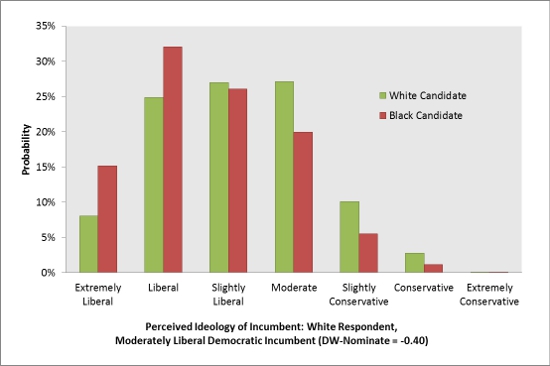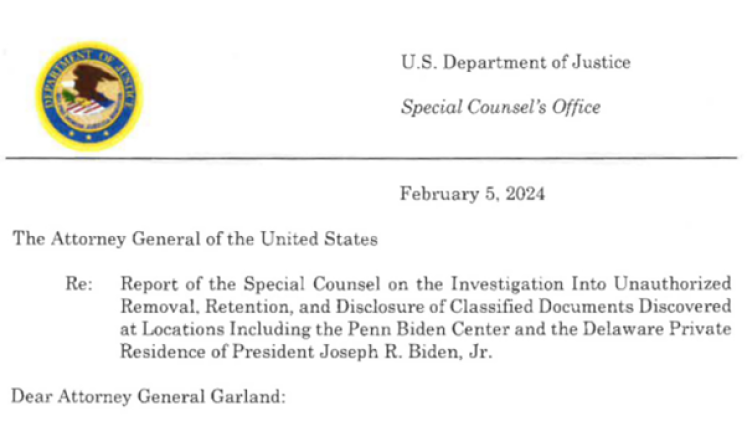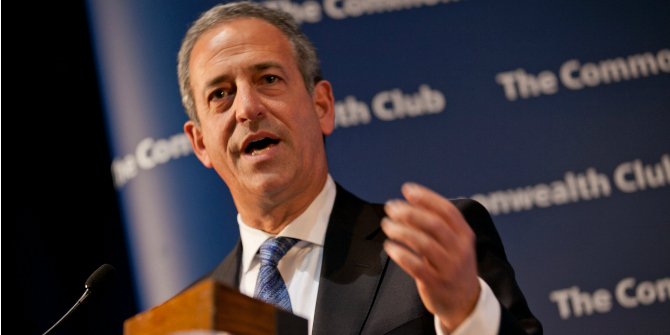 For many, the election of Barack Obama to the presidency in 2008 was a signal that the US had become a post racial society. Despite these beliefs, African-Americans are still disadvantaged when it comes to politics. In new research, Matthew L. Jacobsmeier finds that black candidates tend to be perceived to be more liberal than ideologically similar white candidates, and this may disadvantage them at the voting booth to a greater extent than simpler forms of racial prejudice.
For many, the election of Barack Obama to the presidency in 2008 was a signal that the US had become a post racial society. Despite these beliefs, African-Americans are still disadvantaged when it comes to politics. In new research, Matthew L. Jacobsmeier finds that black candidates tend to be perceived to be more liberal than ideologically similar white candidates, and this may disadvantage them at the voting booth to a greater extent than simpler forms of racial prejudice.
Barack Obama’s election as the first African-American president of the United States in 2008 was a watershed moment in the nation’s history, and much commentary in the popular press at the time suggested that the US was entering a post-racial era. Scholars of racial and ethnic politics, however, were generally skeptical of the idea that a dramatic change in race relations had occurred. Indeed, recent events related to the use of deadly force by police against black Americans and the racially-motivated murder of nine people in a historically black church in South Carolina have highlighted the continuing relevance of race in American politics. Yet while the importance of race in American politics may be obvious, the exact mechanisms by which race affects electoral politics in the contemporary US are less clear. In a recent research (ungated version here), I show that while a large majority of white voters express a willingness to vote for black candidates, these candidates tend to be seen as more liberal than ideologically similar white candidates, and are disadvantaged at the voting booth because of this.
Given the centrality of race and ethnicity in American politics, it is perhaps surprising that quantitative research on the question of whether black candidates suffer a race-based disadvantage at the polls has produced rather mixed results. Evidence that shows that black candidates are punished at the polls in a relatively direct way due to their race is less than compelling. At the same time, it is still exceedingly rare for black candidates to win elections in geographical constituencies where whites make up a majority of the population. How can these facts be reconciled? One partial explanation is that black candidates are sometimes punished not necessarily because they are black per se, but rather because they are seen as being more liberal than their behavior in office warrants. Previous studies regularly found that the perceived ideological positioning of candidates affects voting decisions, but these studies did not fully account for the fact that race can affect the perceived ideological positioning of black candidates. My research suggests that these indirect effects of race on voting decisions may outweigh any simple unwillingness of white voters to vote for black candidates.
I test the hypothesis that race-based misperception of candidates’ ideologies hurts black candidates using American National Election Studies survey data from 1978 to 2004 and Cooperative Congressional Election Studies data from 2010. I focus on elections to the House of Representatives both because it is still rare for black candidates to be nominated for Senate elections, and because the use of racial stereotypes may be more important in elections for lower offices, where voters are more likely to have little specific information about policy positions of the candidates who are running. I use commonly-employed DW-Nominate scores to represent the actual ideological positions of candidates. (The results are similar using other measures of candidates’ ideological locations.) It is particularly important to account for candidates’ actual ideological locations because, on average, black office holders do take more liberal policy positions that white office holders. The key question is not whether black candidates are seen as more liberal than white candidates, but rather whether black candidates are seen as more liberal than ideologically similar white candidates.
I control for a range of important factors that affect perceptions of candidates’ ideologies, and the results strongly suggest that black candidates are seen as more liberal that ideological similar white candidates. This finding holds whether using simpler statistical models or more recently developed statistical methods that aim to approximate controlled experiments by matching up candidates and survey respondents with similar qualities. The figure below, adapted from an earlier paper, shows the predicted probability that a hypothetical white voter will place a candidate at a given location on a seven-point ideological scale, ranging from extremely liberal to extremely conservative.
Figure 1 – Perceived ideology of moderately liberal incumbent (predicted probabilities)

As shown in the figure, a moderately liberal black candidate is nearly twice as likely as a moderately liberal white candidate to be seen as extremely liberal, and roughly 15 percent more likely than an otherwise identical white candidate to been seen as somewhere to the left of moderate.
Why should this race-based misperception of the ideologies of black candidates hurt them at the voting both? On average, most voters place themselves to the right of liberal candidates. If voting decisions are determined at least in part by how ideologically close voters feel to the two candidates, a candidate being seen as more liberal than he or she actually is will increase the perceived distance between that candidate and the typical voter. For voters who would otherwise place themselves roughly in between the two major-party candidates, the race-based misperception of a black candidate’s ideology may make the difference between voting for a black Democrat and a (usually white) Republican. In Figure 2 below, if voters accurately place both candidates, voters to the left of point IA will vote for the black Democrat. However, if voters see the black Democrat as being further to the left, at point BDP, only those voters to the left of IP will vote for that candidate; the back Democratic candidate will lose the votes of those voters located between IP and IA.
Figure 2 – Voting decision of white voter based on perceived ideology of Black Democratic candidate.

Using a model that allows the effects of candidates’ races on vote choice to work both directly and indirectly through perceptions of candidates’ ideologies, I find that black candidates can expect to lose a substantial proportion of votes to race-based misperception of their ideologies. Simulations suggest that in a roughly typical district, a black Democratic candidate can expect to receive approximately 7percent less of the votes of white voters than an ideologically identical white Democratic candidate. The size of the predicted effect varies substantially based on the characteristics of the district and the positioning of the candidates, but the effect is almost always substantial.
Another interesting implication of the model of voting depicted above is that black candidates might actually face larger electoral obstacles in moderate districts than in conservative districts, because in moderate districts, more voters fall between points IP and IA. This is particularly important given that, at present, black candidates are more likely to run in moderate districts than conservative ones. While African-Americans have historically faced particularly formidable formal and informal roadblocks to holding office in conservative areas such as the American South, the race-based perceptual disadvantages described here may actually be more problematic for black candidates running in other parts of the United States.
Race and ethnicity affect US politics in many ways, with racial identification having a powerful influence on partisan identification and one’s race being strongly correlated with socioeconomic factors that predict political preferences and behavior. Quantitative evidence that the race of candidates affects their electoral prospects in the contemporary United States, however, has been scarce. In showing that racial stereotypes lead to perceptual biases that disadvantage black candidates at the voting booth, I demonstrate that the race of candidates is still of central importance to American elections.
This article is based on the paper, ‘From Black and White to Left and Right: Race, Perceptions of Candidates’ Ideologies, and Voting Behavior in US House Elections’, in Political Behavior.
Featured image credit: myJon (Flickr, CC-BY-NC-SA-2.0)
Please read our comments policy before commenting.
Note: This article gives the views of the author, and not the position of USAPP – American Politics and Policy, nor the London School of Economics.
Shortened URL for this post: http://bit.ly/1MyqLRa
_________________________________
 Matthew L. Jacobsmeier – West Virginia University
Matthew L. Jacobsmeier – West Virginia University
Matthew L. Jacobsmeier is an assistant professor of political science at West Virginia University. His research deals with representation, public opinion, and political behavior, and focuses on the effects of race and religion. His work has appeared in Political Behavior, Legislative Studies Quarterly, State Politics and Policy Quarterly, Politics and Religion, PS: Political Science and Politics, and edited volumes.






